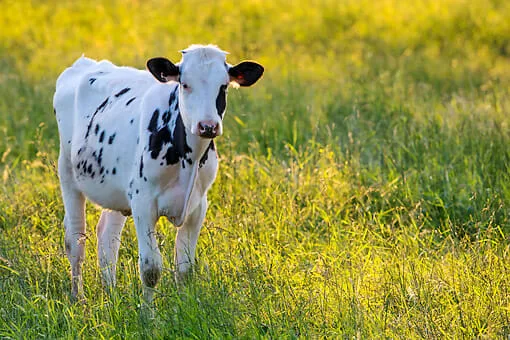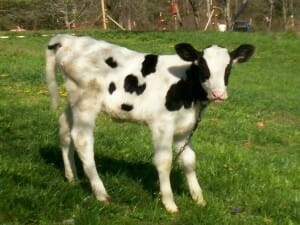Recently, a team of producers, contract growers, consultants and industry representatives across the United States, who are members of the National Dairy Calf and Heifer Association** (DCHA), developed guidelines termed as “Gold Standards” for Holstein calves and heifers outlining categories of production and performance expectations. Further standards for other dairy breeds and crossbreeds will be developed in the near future. The following are selected examples of health, growth and key housing standards:
Birth to six months
Mortality rates
The age of 24 hours shall be used to distinguish between “dead-on-arrival” (stillbirth) and “calf mortality.” Targets:
Morbidity
Defining scours as a case of diarrhea, which requires any intervention for more than 24 hours. Targets:
- 24 hours to 60 days of age: <10%
- 61 to 120 days: <5%
- 121 to 180 days: 0%
Defining pneumonia as a case of respiratory disease, which requires individual animal treatment with an antibiotic (not use of feed-grade medication). Targets:
- 24 hours to 60 days: <5%
- 61 to 120 days: <10%
- 121 to 180 days: <1%
Growth rate
Targets:
- 24 hours to 60 days: double birth weight
- 61 to 180 days: 2 lb. ADG
Colostrum management
First feeding: 4 quarts within first hour of life.
- Quality: colostrum free of blood, debris and mastitis. Test for quality with a colostrum tester or IgG meter.
- Target bacteria count: < 100,000 CFU/mL
- Target immunity level: 90% of animals at 2 to 5 days of age with blood serum total protein of ≥5.2 g/dL for maternal-source-colostrum-fed calves; ≥4.7 g/dL for purchased-colostrum-replacer-fed calves or serum IgG of ≥10.0 g/L.
Housing standard targets
All calves must have clean and dry pens, draft-free, good air quality.
- Calves 24 hours to 60 days of age: sized so calf can turn around
- Calves 61 to 120 days of age: minimum of 34 sq. ft./animal of resting space. Adequate feeding space for all animals to eat at the same time.
- Calves 121 to 180 days of age include the above and a minimum of 40 sq. ft./animal of resting space.
Six months to freshening
Mortality
Total death loss from all conditions, but primarily pneumonia.
- 6 to 12 months: <1%
- 12 months to freshening: <0.5%
Morbidity
- 6 to 12 months: <4%
- 12 months to freshening: <2%
Growth rate
Target growth rate: 1.7 to 2.0 lb. ADG. Perform weigh checks routinely, ideally at least every three months.
By 13 to 15 months of age (breeding) achieve:
- Weight of 825 to 900 lb.
- Hip height of >50″
- Wither height of >48″
Target weight immediately pre-calving: 1350 lb. (or 85% of the weight of full-term, pregnant, mature cows in herd).
Target body condition score at freshening: 3.5 (on a 5-point scale).
Housing
Target feeding space:
- 6 to 12 months: 18″/hd
- 12 to 18 months: 20″/hd
- 18 months to freshening: 24″/hd
- 3 weeks prior to freshening: 30″/hd
Target resting space:
- 6 to 12 months: 45 sq. ft./hd or 1 freestall/animal
- 12 to 18 months: 50 sq. ft./hd or 1 freestall/animal
- 18 months to 2 to 4 weeks pre-freshening: 60 sq. ft./hd or 1 freestall per animal
- 2 to 4 weeks pre-freshening: 100 sq. ft. or 1 freestall/animal
Target freestall space:
- 6 to 9 months: 30″ x 54″
- 9 to 12 months: 34″ x 60″
- 12 to 18 months: 36″ x 69″
- 18 months to 2 to 4 weeks pre-freshening: 40″ x 84″
- 2 to 4 weeks pre-freshening: 43″ x 96″
Vaccination and parasite control
Work with a veterinarian, and, in custom-rearing facilities, dairy owners, to develop a vaccination protocol appropriate to the disease challenges of your operation.
At the Southern Research and Outreach Center in Waseca, we have been contract raising commercial calves from 2 to 4 days to 6 months of age for over 7 years. The above target guidelines are attainable for growth rates. There are still challenges to achieve the expectations in initial immunity level and morbidity (scours only) prior to 60 days of age but we are working with the dairies to continually improve in this area.
More details on these standards can be found on the DCHA web site. Click on ‘DCHA Learning Center’. Take these standards, make copies or post in your calf raising facility as an everyday reminder of management goals you can obtain to benefit you and your future dairy herd.
**Rewritten with permission of DCHA, and Pfizer Animal Health is acknowledged as the project sponsor.


